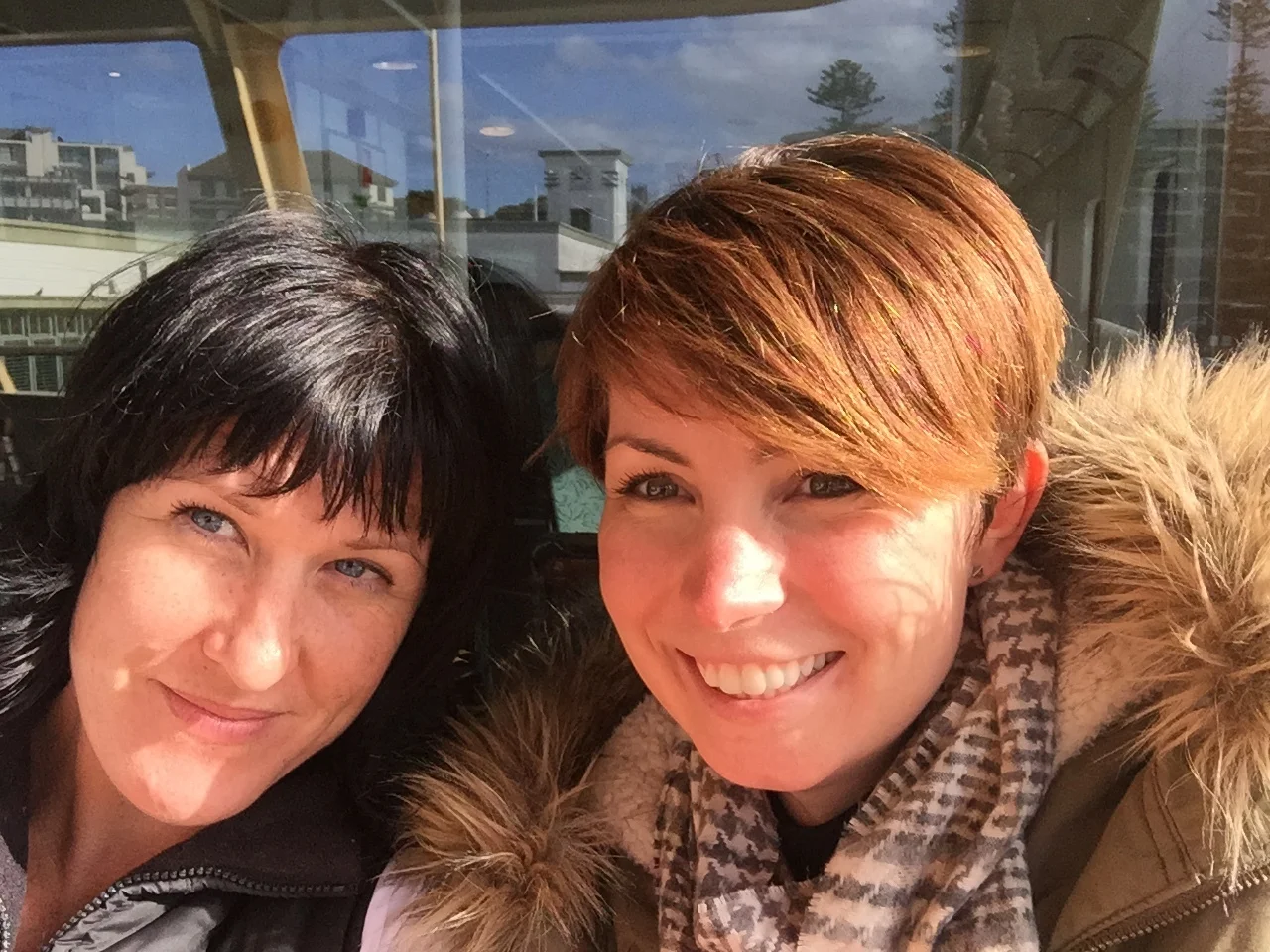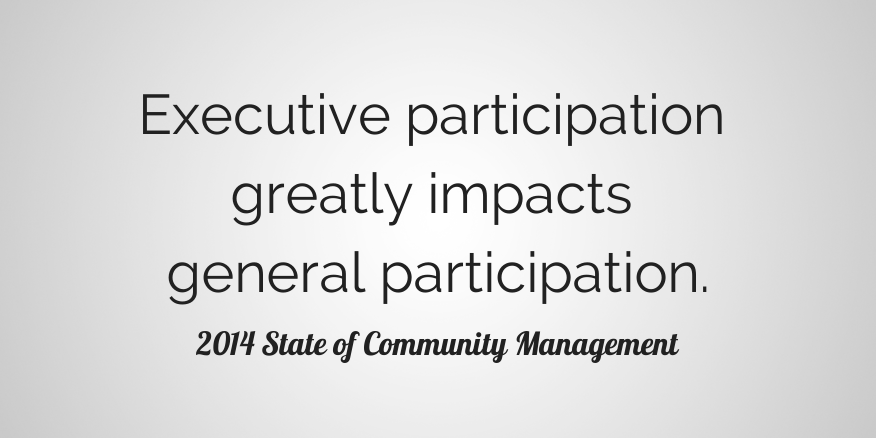Reimagining Customer Support Communities
Customer support-focused communities don’t have to be a cesspool of negativity. Learn how to turn yours around.
Earlier this month I was fortunate enough to speak at the 5th annual SWARM Conference in Sydney, Australia. SWARM is one of my most favorite events in the community space, and I've "watched" from afar, via Twitter, over the last 4 years. The in-person experience did not disappoint in the slightest!
Talks were held at the New Law Building on the University of Sydney campus, and it was nothing short of breathtaking! Had I gone to college on that campus, I probably would have found ways to avoid graduation just so I could stay a few extra years.
This was *not* the New Law Building, but a very lovely building on campus nonetheless.
Alison and Venessa are the most incredible women, and excellent hosts. If you're in the community space, and don't know them, you should. These two really know how to put together an action-packed event that mixed traditional presentations, lightning talks (10 minute quick talks with no slides), and even a good 'ole fashioned debate on the future of community management (spoiler: I lost). It was an amazing event, and we had the #swarmconf hashtag trending on Twitter before 10am on day 1!
My talk centered around the topic of customer support communities, and how we can improve upon our accepted standards. I've been in software long enough to know that your customers will either rant about you, or rave about, depending on the situation. But if they don't say anything, then that's when you need to worry. Sadly, we don't hear nearly enough (if any!) people talking about the great experiences they've had in customer support communities. We don't hear about the money they've saved, the time they've saved, or even the friends they've made. I truly believe that we can make memorable, praise-worthy customer community experiences. We just have to dream big enough, and put in a bit of effort. So my goal for this talk is to inspire all of the customer community managers out there to reach a little higher, and think way outside of the box about what we might be able to achieve.
Have a look through the slides and let me know what you think. Also, here are a few great recap posts written by fellow Swarmees:
7 Tips for Community Managers from the Swarm 2015 Conference by Tayler Trottier
2015 Swarm Conference Notes by Rebecca Norris (Amazing Tumblog!)
Or you can just scroll down and look through a few more photos from Sydney. Your choice. 😉










Resetting Community Boundaries
See how Humans of New York (HONY) lays the smack down, without actually smacking anyone down.
Every now and again we all get a little big for our britches. We puff out our chests, we share drama with friends, and we blow things out of proportion in our heads. And then we sit down at a keyboard.
Community managers and moderators are typically at the receiving end of this banter, and everyone handles it a bit differently. Most people will try and talk with the offending members one on one, but sometimes a situation calls for a different approach.
Below is a copy/ paste of a post from Brandon Stanton, founder of Humans of New York (HONY), a photo blog that provides a small, rare glimpse into someone else's life. In 2014 the comments on HONY's associated Facebook page started to take a beating, so Brandon went online to remind everyone of the rules and why they're there.
Hey Everyone,
Wanted to say a quick word about the comment section. Been getting some emails from people who have been banned. So I wanted to clear a few things up. First of all, nobody has actually been banned. Anyone can see the material. You MAY no longer be able to comment. But rest assured, this was not my decision. I have assistants who moderate the comment section. So, I assure you, I did not make a personal decision to hate/persecute/silence/oppress you. I'm sure we actually have the same worldview. No doubt we are walking arm-in-arm toward the bright dawn of a new day.
But the moderators have very clear instructions: ban anyone who is attacking the subject. If you're attacking the subject with an erudite, graduate level vocabulary, you're still attacking the subject. Again, you're not being oppressed, silenced, persecuted, or targeted for your beliefs. I agree with you wholeheartedly. I'm absolutely sure of it. But please, write about it on your own blog. Humans of New York can continue to exist without your enlightenment. But it can't exist without subjects. Some of you may have noticed recently that some portraits have disappeared shortly after being posted. You can now probably guess why this happened. So if you're making HONY an uncomfortable place to be, by using the comment section to cast extreme judgment on someone you know only through a single quote, you are probably going to be banned from commenting. We don't hate you. Not a bit. Feel free to continue enjoying HONY. Just no more comments.
For the most part, I love the comment section. There are plenty of awesome ways to contribute to the discussion without being judgmental. My favorites are personal anecdotes. If you can add to the subject's experience by sharing a similar or contrasting experience, that is awesome. I really think it expands the work. Just please, keep it about you. Also feel free to joke. We aren't stiff or prudish. But we do know the difference between being funny and being a dick. And you should too. As always, feel free to comfort or encourage. I still firmly believe this place has the nicest five million people on the internet.
Thanks everybody.
Hoping to keep this a good place as we grow.
Brandon
I thought this was a great example of a community-wide level set. It's easy to let the negatives engulf the positives, and take the whole community down with it as result. But Brandon refused to let that happen. Instead, he published a thoughtful, transparent, and very mature response to the people who were keen to tear others down. It's a response that we can all empathize and agree with. It's firm, without feeling parental, yet friendly, without feeling too corporate. It reminds us all that there are real people on the other side of each one of his images and posts.
I'll admit, I'm not a daily follower of the HONY page, but taking a few moments to peruse through the comments today revealed a community with a significantly different tone. One that I'm not sure would have been there had Brandon not reset the boundaries when necessary.
An Easy Tip for Increasing Online Community Activity
Every community needs a quick boost at some point or another. Here's my favorite way to do so.
Are you ready for a really easy way to increase activity in your community?
Ask for it.
Think about how busy you are in a day. How often do you participate as a community member in your favorite communities? Unless you're totally addicted to a particular site, you likely only go into a certain community when you need something.
For example, I only check in on the Cake Central community when I'm looking for cake decorating tutorials, and I tend to visit the Tone It Up community when I want to find recipes that fit with the nutrition plan. I visit the Lithium community when I have questions about using the platform.
Your community members are the same way. They're busy dealing with their daily jobs, taking meetings, soothing angry customers, and trying to figure out their next big win. For most of us community managers managing a branded community/ forum, it's quite unrealistic to expect that community members will to pop into the community every day just to browse.
Unfortunately, most of us get sucked into this expectation that community members will come to the community just to hang out because our communities are just so cool. That's rarely the case! If you need a quick boost, or if there's a killer topic that is in need of a response, just ask someone. Here's how to get the most from your ask:
Be specific — don't send someone a general email and ask them to "start a topic." Give them a specific discussion to respond to, or ask them to share about a particular experience. Make sure to thank them, and offer your help or expertise if they need it!
Make it a match — don't send over discussions that don't match with a community member's interests or expertise. It's a waste of time for the community member, and makes you look like you don't know what you're doing.
Get creative — there are a million ways to ask for participation. You can feature an article, or tweet one out from your company's account. You can build custom mailing lists based on community topics, and reach a broader range of people. You can always remind people to participate at the end of videos or blog posts.
If there's a specific person you want input from, I always recommend reaching out to them in a way that works best for them. Tweets and emails are easy. Perhaps they'd respond well to a personal phone call? If you want results, you'll need to get outside of your comfort zone.
Keep in mind, these tips are meant for short-term boosts. If your struggle for activity is constant then there could be a bigger problem with your community's concept. Constant activity will come when there is a strong sense of community between members, and a sense of community will build around a strong concept. But that's another blog post entirely. :)
If you want to build a bigger, stronger community, then come learn from the best in the business at FeverBee's SPRINT event on October 29th and 30th in San Francisco. (details) I hope to see you there!
How to Create a Community Dashboard that Maps to your Business Objectives
The key to a relevant dashboard is ensuring that your metrics and KPIs map back to your business objectives.
When I listen to webcasts or read blog posts about measuring the value of a community initiative, I’m often met with the same initial advice: map your community metrics back to your overall business objectives. It’s a sensible recommendation because in order to get budget approval for your community, you’ll have to prove its value to those who are signing the checks.
Those who sign the checks tend to be higher up the corporate ladder, and the higher up the ladder you go, the simpler the objective is — hit the number. Really, that’s all that matters to most C & VP level executives, so if you can tie your work back to their numbers, it’s almost a guarantee that you’ll continue to have money available to support the community.
Unfortunately that strategy is a lot easier said than done. Lets discuss exactly how to go about tying your work in the community back to your organization’s overall objectives.
Step 1: Clearly Understand the Objectives
Business objectives change often, sometimes even monthly. Before you start building reports, take time to clearly understand your company's high level objectives so that you don’t end up having to rebuild reports. Find time to speak each of the relevant, high-level stakeholders and ask them the following questions:
What are your top objectives for this quarter/ year? What numbers have you committed to?
What insights/ patterns from the community are you interested in?
What format do you prefer your reports? Year-to-date trends, or data tables?
How much information do you need? How many pages/ dashboard tabs will you look through?
High level stakeholders in community initiatives tend to be marketing, customer support/ customer success, and product/ engineering, but the departments involved will vary depending on your company. Depending on the size of your organization, some C-level executives may be involved as well. Arrive to your meeting prepared, try not to take more than 30 minutes of their time, and don't forget to take notes!
Step 2: Build A Framework
Now that you know exactly what numbers are pushing the needle forward, you can start the process of building the dashboard to map to those needs.
Dashboards tend to be the preferred reporting delivery vehicle for most executives, so you need to deliver your community’s insights to your executive team in the same manner. Dashboards are a combination of text, charts/ graphs, tables, and large numbers. Most reporting tools include dashboard building features, but you could also manually create the dashboard in some sort of a page layout software. Ultimately, you want to deliver a PDF or an Excel file where your management team can easily see your important community insights.
Start this process by building a basic framework of what you’re looking to achieve. And I mean literally draw/ write it out. List out ideas for reports, sketch the format of the dashboard, and write out the objectives in one sentence so they’re easier to understand. Include specific requirements from your executive team on the framework, like, “use line graphs for trends,” or “fit it all on 1 page!” A framework will help you get organized before you set to work in your reporting tool of choice, and will ensure you stay on track once you get in the weeds of reporting.
For kinesthetic learners like me, drawing something on paper works wonders! You might also use a simple wire-framing tool.
Step 3: Build Your Reports
Once you get the framework together, it’s time to build the reports that translate to those top-line objectives. Some objectives are related specifically to a number, for instance: “reduce customer support costs,” but others are a bit more broad, like: “make the community a place where customers get value.” Regardless of the goal, it’s your job to find 1-2 reports that clearly show the community is meeting the defined objective.
Objectives That Are Tied To A Number
Objectives tied to a specific number tend to be the easiest for building reports. If the marketing department’s objective is to increase organic search traffic in effort to reduce spend on PPC, show a bar or line graph of the community page views that originated from search engines by month.
Graphs that go up and to the right are always well received!
If the customer support department is concerned with deflecting costs by leveraging peer-to-peer support, you might show a monthly trend report of topics that have been solved by other customers.
You could further blow your manager’s socks off by doing a direct deflection calculation and showing how much money is being saved by leveraging peer-to-peer support as a strategy.
Objectives That Are Not Tied To A Number
Objectives that are not tied to a specific number are a little trickier to build reports for, so you have to think critically about how the data shown in the report can tie into the overall objective.
For instance if the leader of a product & engineering organization’s objective is to gather more customer feedback, show them a table of the number of active ideas in each product-focused category in the community. You could take this a step further by segmenting the ideas by status so he or she can clearly see how many customer ideas have been implemented by their team.
You could take this a step further by working with your finance/ sales team to determine how much additional revenue has been gained by the release of these features.
A VP of Customer Success might be interested in ensuring customers are receiving value from the community. One way to show value is to show the number of revisits to the community on a monthly basis, or to show monthly active users.
Provide context around how engagement numbers contribute to your company's bottom line.
There are many other ways to measure objectives, so get crafty with it!
Step 4: Put It All Together
The easy part is putting all of the reports and supporting text into a dashboard that’s easy to consume. Most community platforms will come with some type of built-in reporting, so see what your options are for building a dashboard. You can always build one manually if you have to!
Here are a few tips for making sure your final dashboard is effective:
Keep It Short – C-level executives don’t have time to thumb through several pages of reports. Make sure your dashboard can fit on 1 page of paper when printed.
Include Context – If your dashboard covers multiple functional areas, which I would expect it to, make sure to have a line of text that clarifies the overall objective to all who are reading. If you’re showing a report that maps to an objective where a quantitative value isn’t quite clear, add a line of text that clarifies the report.
Be Mindful of White Space – Though you want your dashboard to be short, you also want it to be pleasing to the eye so that others take the time to read it. Be thoughtful towards the amount of white space between different text boxes and reports, and the overall layout of the page.
Step 5: Iterate
Once your dashboard has been shared, figure out a way to gather feedback from the recipients! Find out what’s working and what isn’t, and then continue to refine your dashboard until your management team is satisfied with the format and results. Don’t forget – business objectives change yearly, if not quarterly, so keep in mind that you will likely need to modify the dashboard to align with the overall needs of the business.
What is your process for creating dashboards for your community? What tips do you have to share?
I originally wrote this post in November 2013 for the Get Satisfaction blog. You can find the original here.
3 Ways to Drive Executive Participation in Your Community
Learn 3 proven tips to help coax executives into participating in your community.
Every year The Community Roundtable spends months collecting data from in-the-trenches community practitioners, and publishes it in a succinct, actionable slide deck. This year is no different.
There are tons of nuggets and insights packed into this year's report, but I'd really like to call your attention to the importance of slide 18. In this slide, Rachel and team provide concrete data proving that executive participation within a customer community will greatly impact a community's success. According to the research, C-level participation in a community drives 2-3 times more collaboration and content creation behavior in a customer community than a community with no C-level participation whatsoever.
A Story About Executive Participation
As most of you know, I used to lead the community team for Get Satisfaction from 2012-2014. Prior to getting C-level involvement in our community, true engagement in our community was tough to find. We had plenty of customers posting surface-level product questions and problems, but the collaborative conversations and thoughtful ideas didn't really start to flow until our customers began to see that our executive team cared about their opinions.
The movement for executive participation was really spearheaded by the leadership and collaborative nature of CTO, David Rowley. I had previously struck out with getting other execs on board with the idea, but Dave was different. Because he lead our product team, Dave naturally understood the need to have product-related conversations with our customers in the community, but on top of that he also had a personal interest in building relationships with our customers.
Knowing that Dave's available time was slim, we started by setting up a 30 minute, weekly recurring meeting between my team, Dave, and our product managers. In this meeting, we would share community-submitted ideas with the product team, they would give us their thoughts, and then we'd respond in the community. Over time, Dave and the product managers began taking more initiative in responding in the community, and by the time I left the company Dave was consistently the top, most active non-community employee in the community. To date, Dave has posted over 1,000 replies back to customers in the Get Satisfaction community, and the overall community conversations have become much richer as result.
To show Dave how cool you think his community spirit is, send him a Tweet! Go ahead, I'll wait. :)
How to Make it Happen
As community managers, our job really hinges on the success of the community and its impact to the organization. If executive participation increases engagement in your community, which ultimately leads to community success, then it's in your very best interest to drive C-level participation in your communities. Here are my 3 tips for making that happen:
Make It Matter
An executive is not going to take the time to participate in the community unless it's for reasons that personally matter to them. We all only have so much time in the day, and senior leaders seem to have even less time than most of us, so only the really important initiatives will make the cut. Dig deep. Find a particular issue that resonates with them and tie it into the community. If you can show that participating in the community will help advance their goals and initiatives, they will be more apt to prioritize time to participate. Not sure how to figure out what matters? Check out Robin Dreeke's talk from CMX Summit for tips.Make It Easy
Leadership team members don't have a lot of time on their hands to learn new systems and browse through posts. Make things easy by curating the top 1-3 topics in your community that they would be interested in/ need to take action on, and send it in an email with explicit instructions. If you need them to post a response, say so. If you need them to re-tweet a particular article, tell them. Don't forget to include the exact links while you're at it!Make It A Habit
Be mindful of your executive's time, but also take care to begin building a habit of checking in with them about the community. Even if there's nothing that you need for them to do in the community, it's still good to check in weekly with an update to keep it top of mind. Share some positive stats, especially if it's related to engagement on their contributions, and give feedback on how their efforts are working. Don't forget to share this information with the rest of the organization too! Once a habit has been formed, the momentum around participating will continue to build and likely spill over to other members of the executive team.
The data proves executive participation matters to the success for the community, and I've just shared 3 tips for doing just that. What are yours?
Don't forget to check out the details of these findings, and more, in the 2014 State of Community Management report!








